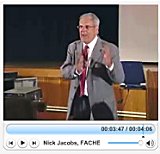As National Women’s Month drew to a close and faded into the other 11 months that are not dedicated exclusively to Women, I received a solicitation from an Email friend regarding a new book written by author, Phyllis E. Greenberger, titled “Sex Cells.” The author had a list of credentials regarding advocacy for women’s health that was as long as my forearm, and the fact that her latest book was published by Mayo Clinic Press was all I needed to respond positively to read and comment on her work.
The core of her book is that, despite all the work that has been done during the past thirty or so years, women are often still treated medically like men. She maintains that “Every woman can point to a time her pain wasn’t taken seriously or a medical professional didn’t seem knowledgeable about women’s health.” With her focus on biological sex differences, Ms. Greenberger, “continues to be struck by the lack of understanding of the topic, even among medical professionals.”
Consequently, the book provides the readers access to “the wide-world of sex-specific medical issues . . .how women pay the price, with a close look at the impact that it has on minority populations. “Told with humor, ferocity, and passion, ‘Sex Cells’ appeals to anyone interested in health, women’s rights, and public health policy.”
Having personally been involved on the administrative side of healthcare for nearly four decades with a focus on research directed primarily toward women, this topic captivated my interest. During my time at our research institute, the work was focused on breast, cervical, endometrial, and ovarian cancers plus heart disease, diseases that the author referred to as “bikini medicine” because it was limited to breast and genital health. Interestingly, however, our research not only looked at the genomic differences, we also studied the impact of behavioral modification on these various maladies.
It was during this time that we began asking female patients suffering from these diseases to visit the researchers and explain what they were going through. This was intended to personalize their challenges and encourage the scientists to look at individual women instead of just numbered test tubes and aliquots. In other words, we attempted to personalize, humanize, and feminize their work.
We found genetic differences associated with race, ethnicity, and sex that would alter not only the severity of the disease but also the detection and eventual prevention and cure of certain diseases that were very different than those formerly acknowledged in the field.
During this time, as the author so skillfully pointed out, it was clear to us that generally, research on an international level was challenging in its history due to its lack of inclusion of women and minorities in clinical trials. Ms. Greenberger also addressed how women can begin to advocate for themselves in the doctor’s office.
She elaborated on the disparities women face in medical treatment that continue to this day. These disparities are even more prevalent among female minorities. Equal but not the same as the primary thesis of “Sex Cells.”
Her chapter titles ranging from “The History of the Mystery, The Heart of the Matter, Neurological Stew, to a Brighter Tomorrow,” address topics and content that display the gravity of the challenges which are all carefully explored and amplified.
Phyllis Greenberger has been at the forefront of advocacy for women’s health for decades, and this book is a strong example of her dedication to enlightening her readers about the challenges of women’s health.
As Louse Otto-Peters, a German suffragist and women’s rights activist said, “The history of all times, and today especially, teaches that . . . Women will be forgotten if they forget to think about themselves.”
This book “. . . is a comprehensive tale of scientific stonewalling, intrepid advocacy, and the still-pitched battle to get the scientific and medical world to recognize that women are not small men.”




